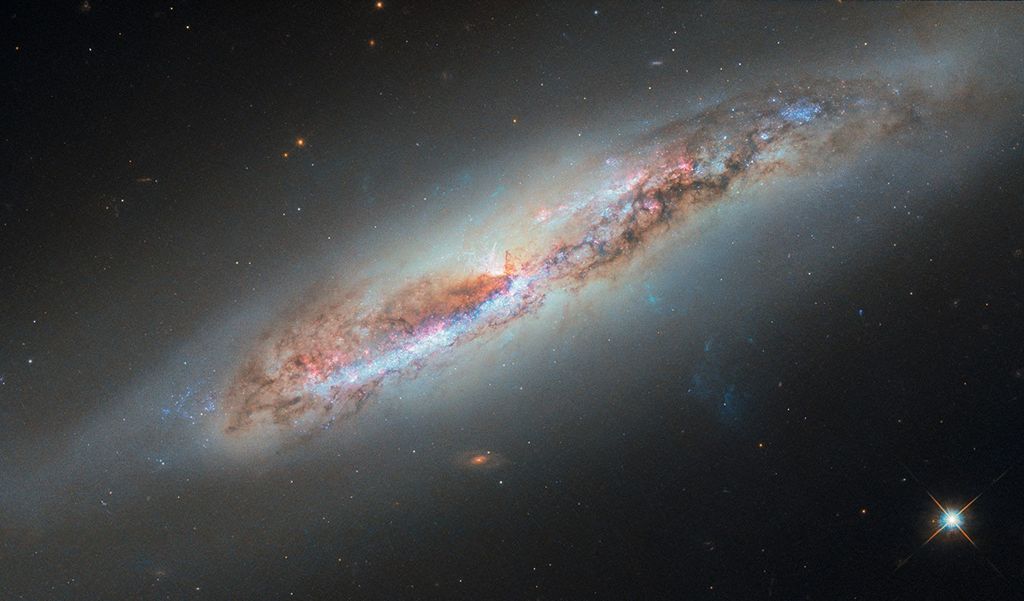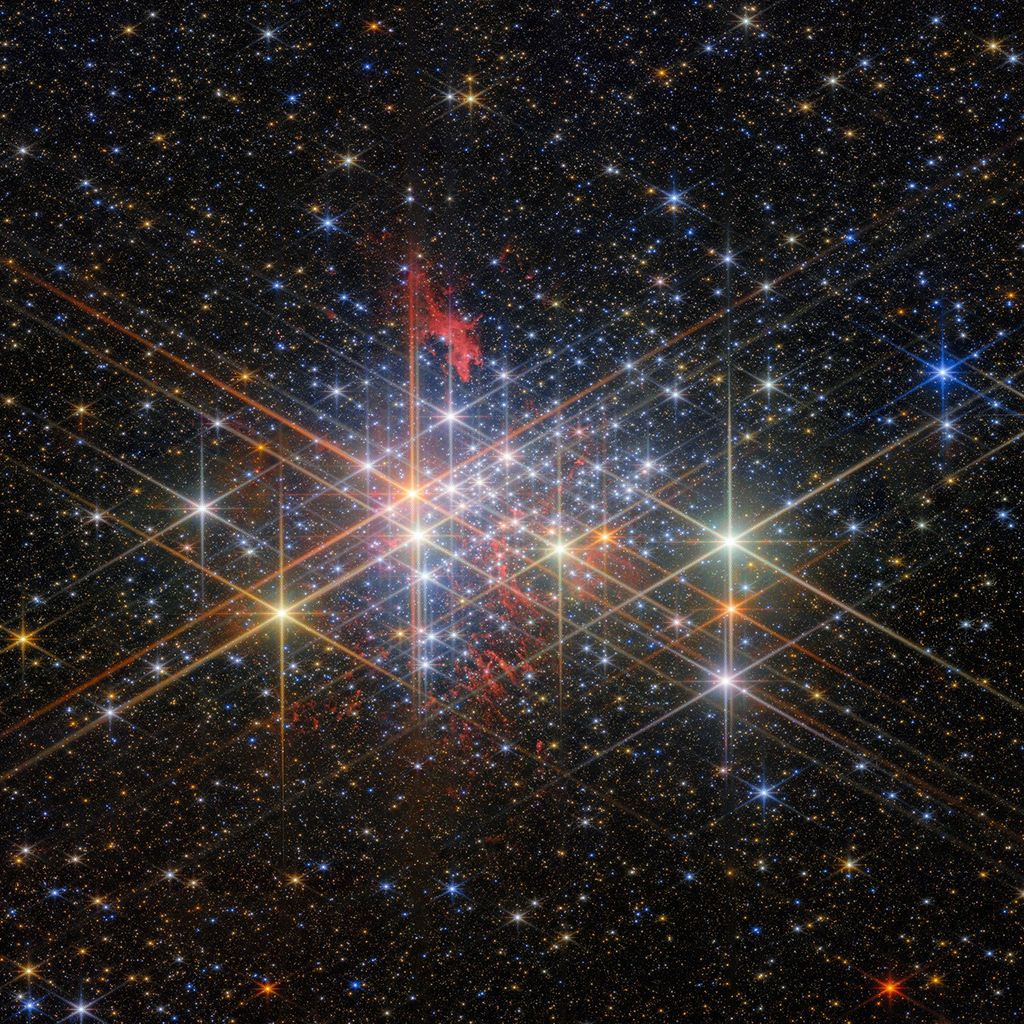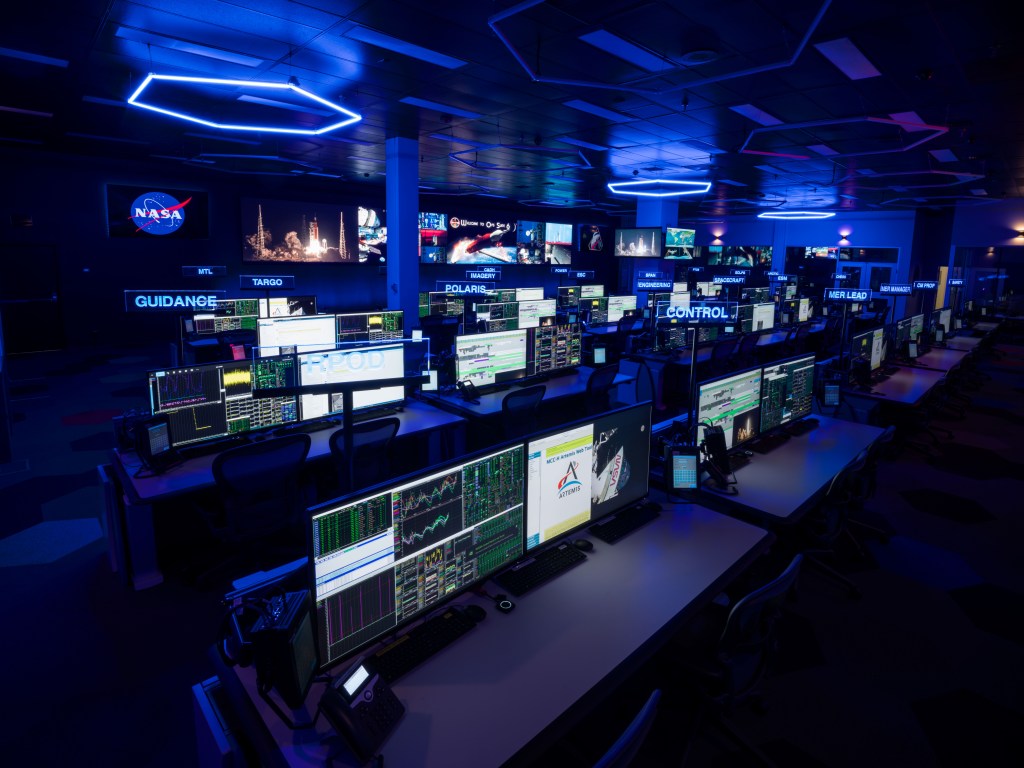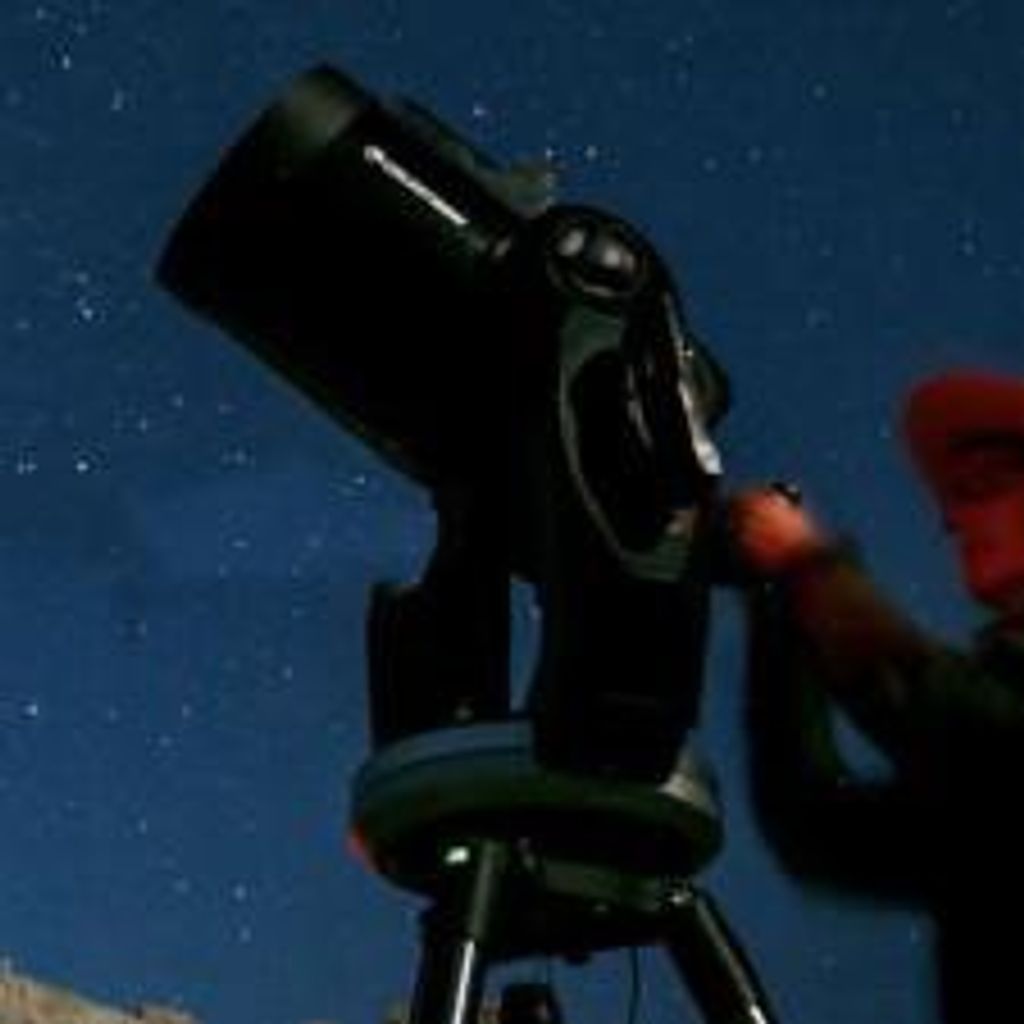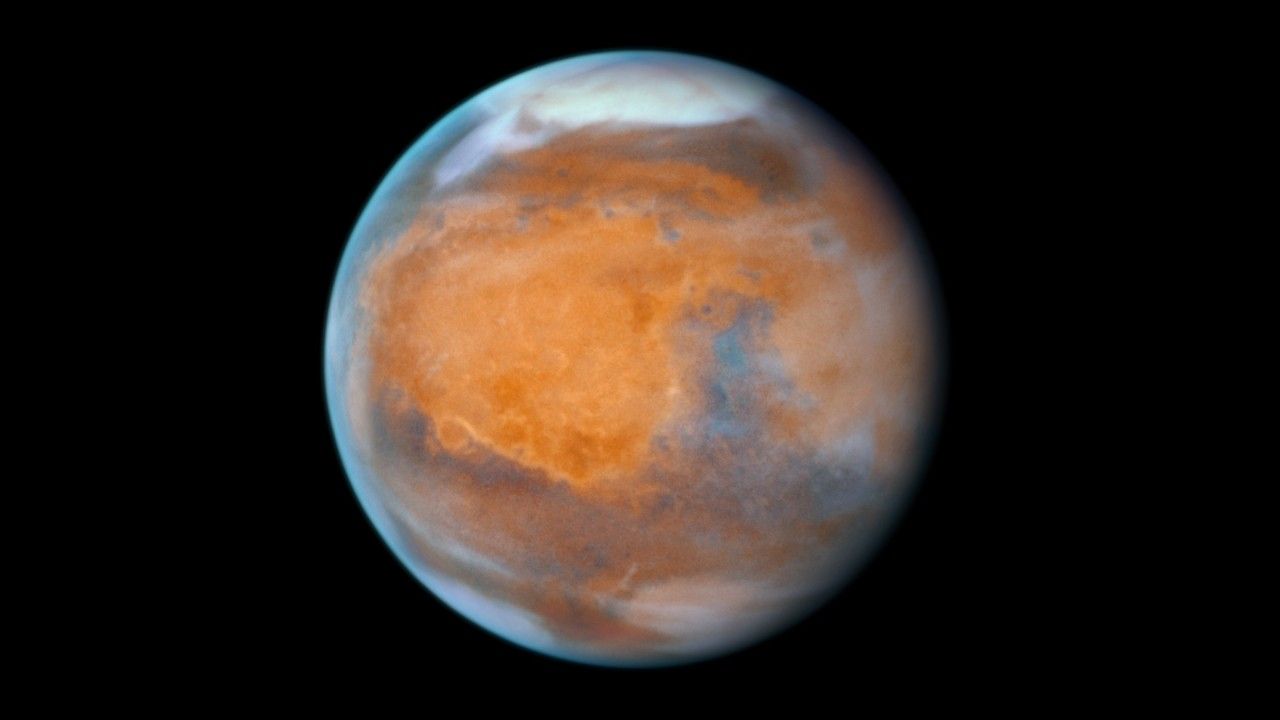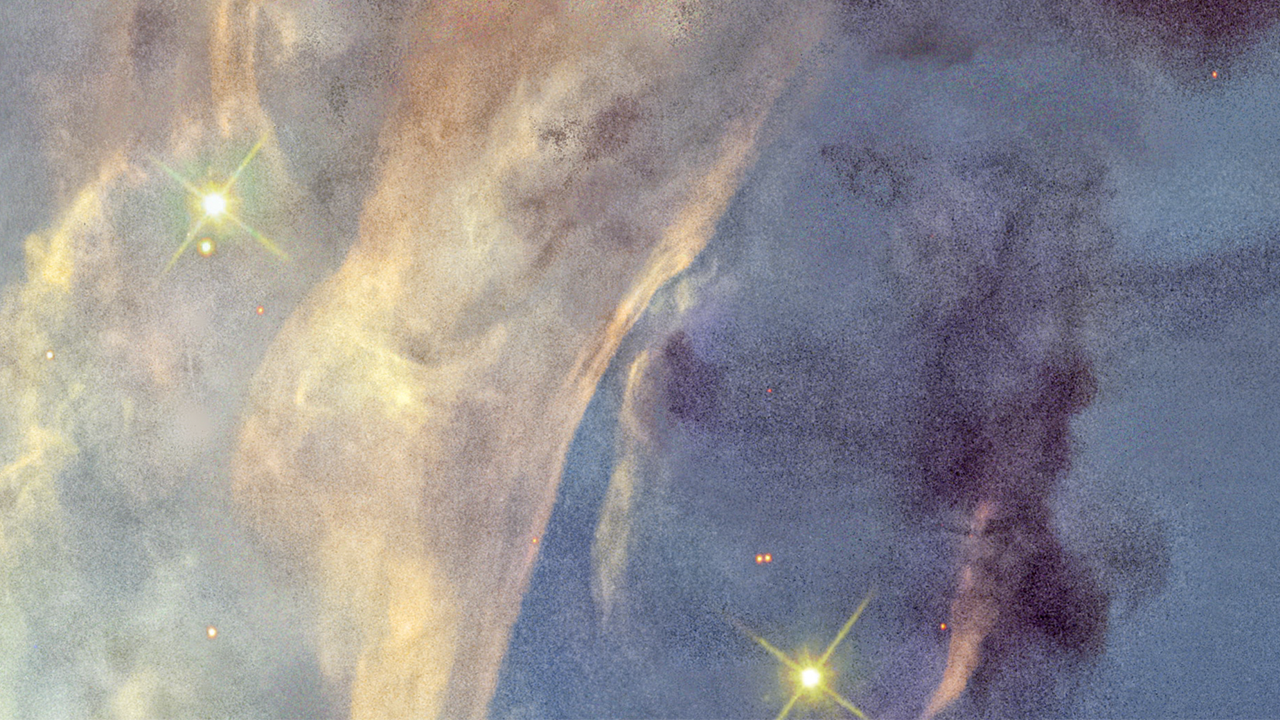1 min read
Dark Clouds in Rosette Nebula

This is a Hubble Space Telescope photo of a small portion of the Rosette Nebula, a huge star-forming region spanning 100 light-years across and located 5,200 light-years away. Hubble zooms into a small portion of the nebula that is only 4 light-years across (the approximate distance between our Sun and the neighboring Alpha Centauri star system.) Dark clouds of hydrogen gas laced with dust are silhouetted across the image. The clouds are being eroded and shaped by the seething radiation from the cluster of larger stars in the center of the nebula (NGC 2440). An embedded star seen at the tip of a dark cloud in the upper right portion of the image is launching jets of plasma that are crashing into the cold cloud around it. The resulting shock wave is causing a red glow. The colors come from the presence of hydrogen, oxygen, and nitrogen. Explore the nebula's multi-wavelength appearance on Viewspace.org.
About the Object
- R.A. PositionR.A. PositionRight ascension – analogous to longitude – is one component of an object's position.06:33:45
- Dec. PositionDec. PositionDeclination – analogous to latitude – is one component of an object's position.+04:59:54
- ConstellationConstellationOne of 88 recognized regions of the celestial sphere in which the object appears.Monoceros
- DistanceDistanceThe physical distance from Earth to the astronomical object. Distances within our solar system are usually measured in Astronomical Units (AU). Distances between stars are usually measured in light-years. Interstellar distances can also be measured in parsecs.5,200 light-years
- DimensionsDimensionsThe physical size of the object or the apparent angle it subtends on the sky.Image is about 2.7 arcmin across (about 4 light-years)
About the Data
- Data DescriptionData DescriptionProposal: A description of the observations, their scientific justification, and the links to the data available in the science archive.
Science Team: The astronomers who planned the observations and analyzed the data. "PI" refers to the Principal Investigator.The HST observations include those from program 17856 (C. Britt)
- InstrumentInstrumentThe science instrument used to produce the data.WFC3/UVIS
- Exposure DatesExposure DatesThe date(s) that the telescope made its observations and the total exposure time.27 December 2024
- FiltersFiltersThe camera filters that were used in the science observations.F438W, F502N, F555W, F656N, F658N, F814W
- Object NameObject NameA name or catalog number that astronomers use to identify an astronomical object.Rosette Nebula
- Object DescriptionObject DescriptionThe type of astronomical object.Emission Nebula
- Release DateApril 23, 2025
- Science ReleaseEye on Infinity: NASA Celebrates Hubble’s 35th Year in Orbit
- CreditImage: NASA, ESA, STScI; Image Processing: Joseph DePasquale (STScI)

These images were acquired by the WFC3 Instrument on the Hubble Space Telescope. The color results from assigning different hues (colors) to a monochromatic (grayscale) image. In this case, the assigned colors are: Blue: F438W+F502N, Green: F555W+F656N, Red: F814W+F658N

Related Images & Videos

Mosaic of Hubble 35th Anniversary Targets
A selection of photogenic space targets to celebrate the 35th anniversary of NASA's Hubble Space Telescope. Upper left: Mars. Upper right: planetary nebula NGC 2899. Lower left: a small portion of the Rosette Nebula. Lower right: barred spiral galaxy NGC 5335.

Rosette Nebula Context Image
The Rosette Nebula is a vast star-forming region, 100 light-years across, that lies at one end of a giant molecular cloud. The background image is from the Digitized Sky Survey, while the inset is a small portion of the nebula as photographed by the Hubble Space Telescope.

Planetary Nebula NGC 2899
This video zooms across 6,500 light-years through a star-studding field to visit the planetary nebula NGC 2899, as photographed by the Hubble Space Telescope. The nebula has a diagonal bipolar structure formed by a cylindrical-shaped outflow of hot gasses and radiation from the c...
Share
Details
Claire Andreoli
NASA’s Goddard Space Flight Center
Greenbelt, Maryland
claire.andreoli@nasa.gov

